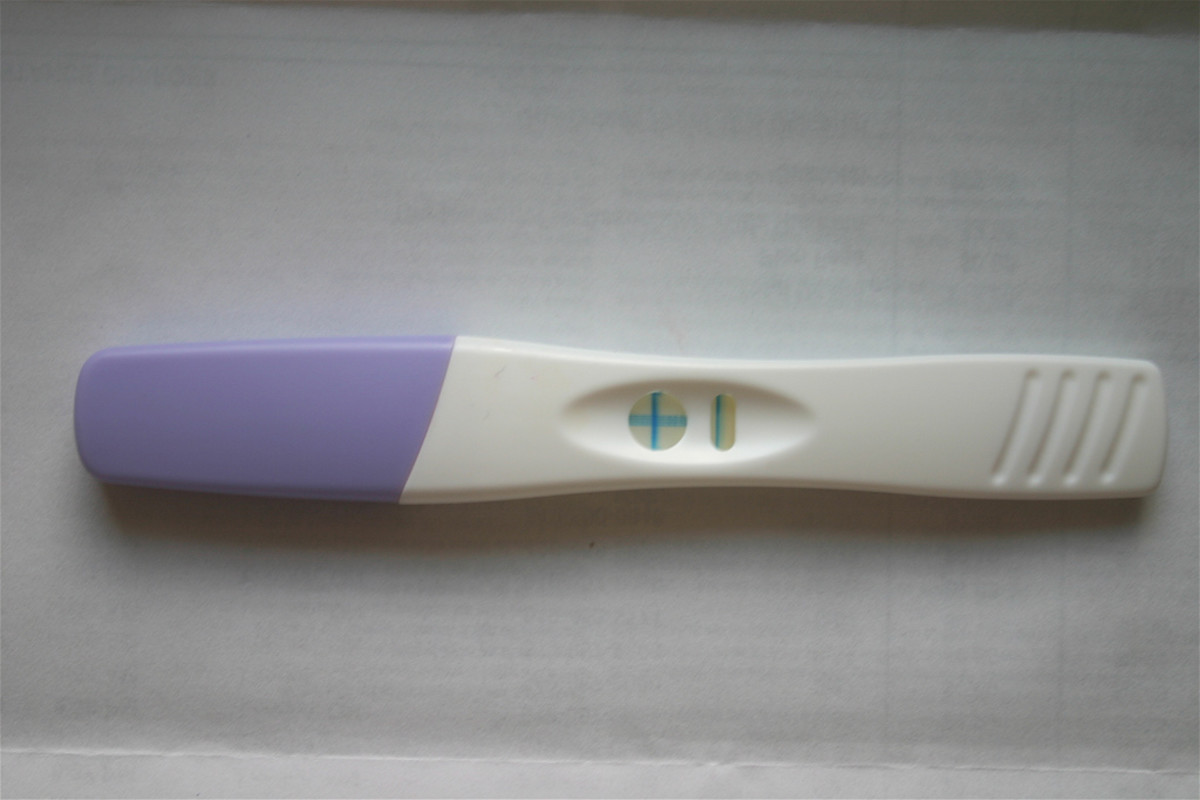Does Breastfeeding Really Prevent Pregnancy?

Introduction
Like many practicing Catholics and NFP users, I have used ecological breastfeeding to space my children without having to bother with charting and tracking my fertility, I cannot count the number of times that family, friends and even doctors have said to me, "You know you can still get pregnant," or "You know so-and-so got pregnant while breastfeeding," as if the only way to prevent pregnancy is to use contraception.
Ask most people if breastfeeding is a reliable method of postponing pregnancy and you will likely get a similar response. Most Americans believe that the breastfeeding as birth control idea is a myth, perpetuated by "uneducated," people who don't want to use birth control because of their "outdated" religious convictions.
Is the idea that breastfeeding cannot be relied upon to prevent pregnancy really a myth, as so many believe? Well, yes and no. It depends on which method of breastfeeding we are talking about.
Yes! Breastfeeding the way God (or nature) intended does, in fact, suppress fertility. Throughout history, children have been born about 2 years apart because women throughout the ages and in every civilization have fed and pacified their babies at the breast.
No! The western societies in developed countries have turned their backs on the natural, God-designed principles of breastfeeding that do in fact suppress fertility with better than 99% effectiveness and as a result, the typical American breastfeeding pattern has very little effect on fertility and cannot be relied upon to prevent pregnancy.
How Does Breastfeeding Prevent Pregnancy?
The science behind how breastfeeding prevents pregnancy is pretty simple. The hormonal changes that cause a woman to lactate (namely higher prolactin levels) cause her to stop making progesterone and estrogen. Prolactin also blocks the release of the follicle-stimulating hormone and leutenizing hormone, or LH, which cause the ovaries to form follicles that ovulate. As long a woman is nursing frequently enough to keep her in this hormonal state, she will not ovulate.
As a woman begins to transition off breastfeeding, her prolactin levels begin to fall and the hormones responsible for ovulating begin to be produced once again. This can happen at anytime during the weaning process, depending on the women. Some women will see the return of her fertility right away while others will not resume menstruation until they have all but stopped breastfeeding.
Why Risk Counting on Breastfeeding When Other Methods are a Sure Thing?
This is another common objection I frequently get. A friend concedes that breastfeeding does suppress fertility but questions why someone would risk getting pregnant rather than simply use a "sure thing" like the pill or use a condom.
The very question implies that breastfeeding is not a highly effective method for delaying pregnancy. However, traditional breastfeeding methods are every bit as effective as the popular forms of contraception. Most married couples do not use condoms and birth control, "just to be safe." Why should they use the pill while breastfeeding?
Compare the Pregnancy Rates of LAM to That of the Most Common Methods of Birth Control
Method
| Perfect Use
| Typical Use
|
|---|---|---|
LAM (Lactational Amenorrhea Method)
| >1%
| 2%
|
Ecological Breastfeeding
| >1%
| 2%
|
Breastfeeding in General
| ---
| 6%
|
Natural Family Planning
| >1%
| up to 20%*
|
Oral Contraceptives (The pill)
| >1%
| 8%
|
Birth Control Shot
| >1%
| 3%
|
Condom
| 2%
| 15%
|
*NFP is extremely effective, but the woman must be committed to tracking her fertility signs and the couple must be committed to abstaining during the fertile time.
Average Length of Infertility
A mom using modern breastfeeding practices can expect to see a return to fertility between 1 and 3 months. Women should consider using another method to prevent pregnancy, such as NFP or abstinence.
Typical American Breastfeeding Patterns
It's worth saying again: Typical American breastfeeding should not be relied upon to prevent pregnancy.
The typical American method of breastfeeding is far different than the way women have traditionally breastfed their babies. Most American women return to work within months of having their baby and so must supplement breastfeeding with bottles. Infants are expected to sleep through the night by two months old, and mothers are taught that they should never, ever, co-sleep with their infants lest the baby succumb to SIDS or suffocate. (In truth, the countries with the lowest SIDS rates are those where mothers have traditionally co-slept with their infants and safe co-sleeping practices are followed). Infants are routinely pacified with pacifiers and mothers are told they should not allow baby to fall asleep at the breast and put their babies on parent-led feeding schedules rather than feeding "on-demand.
These practices reduce the frequency and amount of time spent breastfeeding, and so reduce the probability that mom will remain in a state of infertility.
Average Length of Infertility
The LAM method can be counted on to suppress fertility for about 6 months. After that it is recommended to begin using another method, like the symptom-thermal method of NFP if you wish to postpone pregnancy further.
What is the LAM Method of Pregnancy Prevention?
LAM stands for Lactational Amenorrhea Method and is a well-researched method of pregnancy prevention. This is not a new technique or birth control method, but rather a new name used to distinguish breastfeeding patterns that are known to cause the hormonal state that causes infertility from typical American Breastfeeding patterns, which may not lower hormone levels enough to suppress fertility.
A woman using the Lactational Amenorrhea Method can safely consider herself infertile as long as 3 conditions are met.
1. Menses has not returned.
2. The Infant is no more than 6 months old.
3. Mom is not regularly supplementing breastfeeding with bottles or baby foods.
Average Length of Infertility
Ecological Breastfeeding has been shown to cause infertility for an average of 14 months. In fact, prior to the use of formulas, the average space between children was 18-30 months, with the average being between 2 and three years. This is still the case in less developed countries!
What is Ecological Breastfeeding?
Ecological Breastfeeding describes the way women have breastfed throughout the entire history of humankind, until just the last century or so. Today, with the majority of moms going back to work within the first 3 months of birth, and many modern "child experts" advising parents to help their infants reach levels of independency never before seen in human history, breastfeeding looks very different than it did just a little over a hundred years ago.
The 7 Principles of Ecological Breastfeeding are:
- Exclusively breastfeed for the first six months of life; don't supplement with other liquids and solids. After six months, the mother gradually begins to introduce other liquids and solids, but still breastfeeds until at least 1 year.
2. Pacify your baby at your breasts, do not regularly pull baby off breast once he is done "eating" or to keep him from falling asleep at the breast.
3. Don't use bottles and pacifiers.
4. Sleep with your baby for night feedings* or at least do not encourage baby to sleep through the night, as is the norm in America.
5. Sleep with your baby for a daily-nap feeding* or at least lie down with your baby to allow her to nurse for at least 45 minutes to an hour.
6. Nurse frequently day and night, and avoid schedules that limit when and how long your infant can nurse.
7. Avoid any practice that restricts nursing or separates you from your baby.**
*See this article from Dr. Sears for more information about the safety of Co-sleeping with an infant.
**Every mom needs a break every once in a while. Schedule frequent but short spurts of time away for between feedings.
If you have practiced Ecological Breastfeeding, how long were you infertile?
Why do so Few Women Know About These Options?
Contrary to what the pharmaceutical companies and sexual revolution enthusiasts want you to believe, the LAM and Ecological Breastfeeding methods are just as effective, if not more so than the most popular methods of birth control.
Even with all the reliable research available supporting breastfeeding as an effective was to space children why are so many people unaware/ distrustful of this free, all-natural method of postponing pregnancy? I believe there are three main reasons for this.
Number one, there is no money to be made. Ecological breastfeeding and LAM are both completely free and take money away from contraception and formula companies. There is no one to stand up for LAM or Ecological breastfeeding on a large-scale level because advertisements and outreach take money. The contraception and formula companies, however have lots of money they can spend and one big reason to keep people using their products.
Second, many medical professionals dissuade women from using this option, even telling them that it is not reliable. Is the truth actually that some doctors would rather their patients choose "easier" options like condoms and birth control than take the time to support and help understand how to use breastfeeding to effectively postpone pregnancy? Do they not trust that their patients will use these methods correctly?
Third, the American mindset prevents many people from viewing LAM and ecological breastfeeding as valid options. We have been so indoctrinated with the idea that the only way for married couples to prevent pregnancy is to use contraception, that many people cannot fathom that there could really be effective alternative options. The long term commitment that these methods require of women are more than many women are willing to make. For example, it requires that a woman stop working to stay near her child for at least the first year, make herself available to her child for breastfeeding at all times, even at night, and to limit or avoid alcohol.
Take This Quiz to Find Out if Ecological Breastfeeding or LAM is the Right Option for You
view quiz statistics© 2014 Sarah









